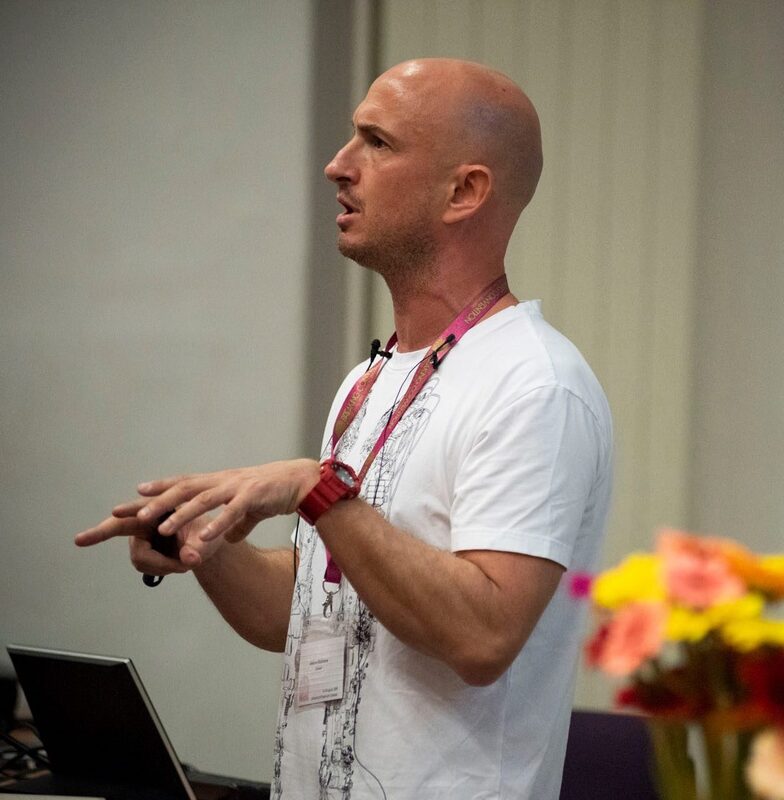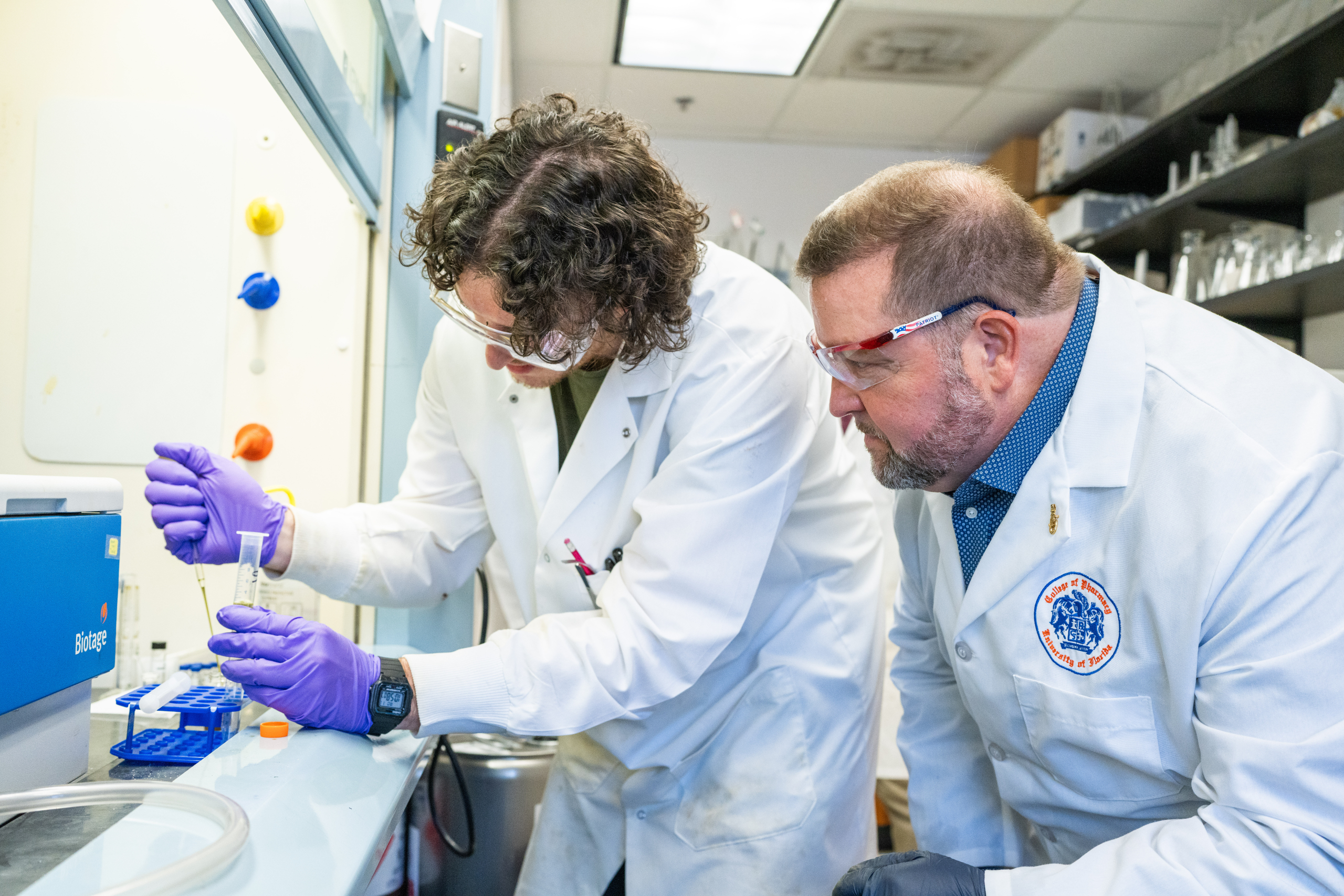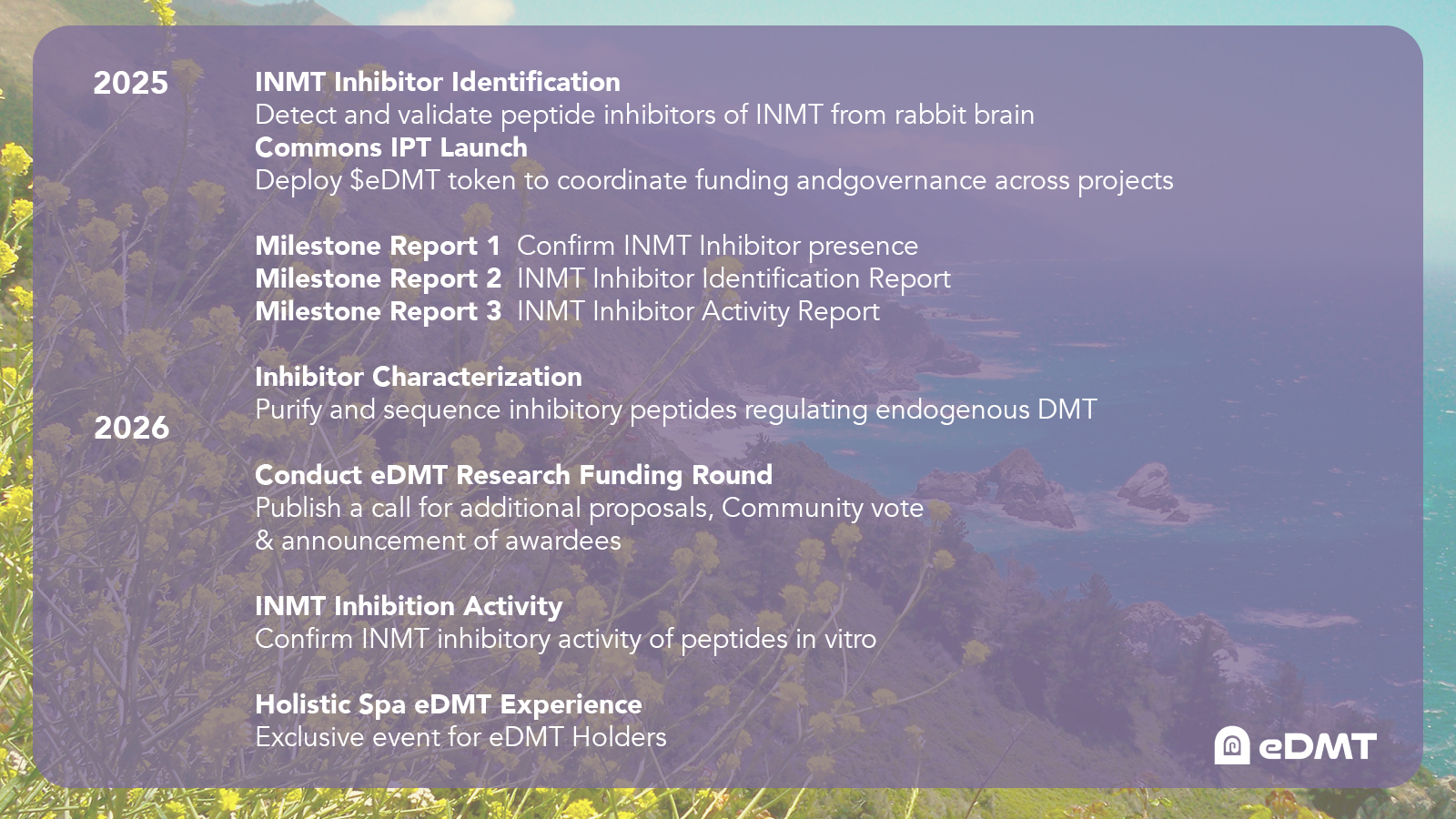DMT is inside you. And your pet rabbit.
Yet people hardly talk about this curious, mysterious fact. And science still knows very little about how the production of this endogenous psychedelic is regulated.
In our biggest project yet, PsyDAO has helped fund an important investigation into one of neuroscience's most intriguing puzzles. The eDMT project could revolutionize our understanding of the brain's natural chemistry, and open the door to regulating the body’s own supply of DMT.
Conceived by renowned DMT researcher Dr. Andrew Gallimore, the investigation is led by prominent chemist Dr. Christopher McCurdy at the University of Florida.
eDMT is sponsored by a nonprofit called Noonautics, and is being conducted under a formal agreement with the University of Florida. Research will happen in Dr. McCurdy’s lab.
In a novel agreement, PsyDAO sent $107,000 worth of stable coins to Noonautics, to be converted into dollars and sent to the University of Florida.
PsyDAO’s funding powers one milestone in the research, which totals over $400,000.
$eDMT is here.
Follow the eDMT project on X.

Picking Up Where 1977 Left Off
The eDMT project is novel, but it has a strong scientific foundation. Researchers long ago discovered that DMT is produced in a wide variety of plant and animal tissues, including humans. However, DMT’s exact pathway of creation and regulation remains a mystery.
Intriguingly, a clue has been unearthed. While researching his latest book, “Death by Astonishment,” Dr. Gallimore stumbled upon a long-forgotten 1977 research paper. In it, scientists reported evidence for peptides that apparently inhibit a well-known molecule called INMT. INMT is a “gas pedal” for DMT, converting tryptamine into dimethyltryptamine. The enigmatic peptide, which was never characterized, seems to be INMT’s “brake pedal,” and therefore limits endogenous DMT.
Despite the potential significance of this 1977 discovery, the research was abandoned and remained buried for nearly five decades. That is–until Dr. Gallimore dredged it up.
The insight could open a new window into human biology. An understanding of DMT’s gas/brake pedals could lead to new approaches to treating ischemic stroke, neurodegenerative diseases, and mood disorders. Dialing down the body’s DMT could treat mental illnesses. Ratcheting up endogenous DMT could give humans access to a legal and "drug-free" pathway to altered states of consciousness.
See Dr. Gallimore’s explanation of the project.

Rigorous Scientific Approach
Before we can regulate our own DMT, we need to verify the existence of DMT’s “brake pedal.” So the project's first phase will focus on replicating and extending the 1977 findings. The research team in Dr. McCurdy’s lab at the University of Florida will use advanced analytical techniques to isolate and characterize the unknown peptide–first in rabbit tissue, then in human cerebrospinal fluid. The study is designed with appropriate controls and follows established protocols for peptide purification and identification.
Read the press release from the University of Florida.
The eDMT Roadmap:

Community-Driven, Blockchain-powered Science
This novel research is powered by an equally novel organizational structure, the DAO. PsyDAO, like other research DAOs, operates on principles of Decentralized Science, or DeSci. DeSci is organized and funded via blockchains such as Ethereum and Solana.
PsyDAO has a strong foundation. The organization was incubated by a DeSci pioneer called Molecule, and is part of an ecosystem of DeSci organizations researching Longevity, Women’s Health, Gut Health, and more. These DAOs are controlled by thousands of token holders who vote to approve projects. In a vote using a blockchain, PsyDAO token holders signaled their support for eDMT, almost unanimously. eDMT is perhaps the first psychedelic research project that uses blockchain tech.
To fund the eDMT research, PsyDAO is issuing the $eDMT token through Molecule’s token platform, Bio.

Read How PsyDAO's Token-Based Voting System Works.
Use Molecule’s ChatGPT plug-in to ask questions about DeSci.
PsyDAO’s Broad Scope
Like many DAOs, PsyDAO members have a wide range of interests and enthusiasms, and it shows in the diversity of the group’s endeavors. Since November, PsyDAO has used blockchain tech to:
-
Fund the opening of a cafe in Peru.
-
Launch a project on longevity.
-
Give grants to small psychedelic projects.
About the Research Team
Dr. Andrew Gallimore is a chemical pharmacologist and neurobiologist, and a leading expert on DMT neuroscience. He has authored three books on DMT. With Dr. Rick Strassman, he was one of the pioneers in extended-state DMT protocols.
Dr. Christopher McCurdy is a professor of medicinal chemistry at the University of Florida with expertise in the isolation and characterization of psychoactive compounds. He has authored hundreds of research papers and appeared on the TED stage and the Andrew Huberman podcast.
Ready to participate in the future of psychedelic research?
DAOs are powered by regular people working toward their passions. If you believe in the power of psychedelics and Web3 and want to contribute to PsyDAO, please: